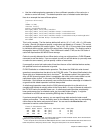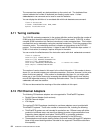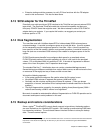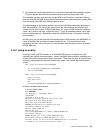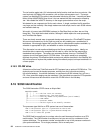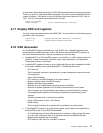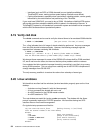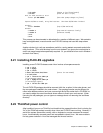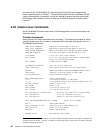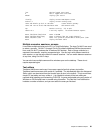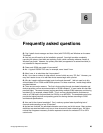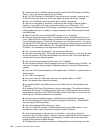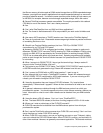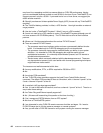Chapter 5. Additional Topics 59
$ cd rundir (change to /usr/flexes/rundir)
$ sh shos (start our shell script)
Wait for 3270 sessions to start
flexes> ipl a80 0a8200 (note that prompt changes to flexes)
Operate OS/390 as normal, using 3270 sessions. Shut down OS/390 when finished.
Window 2
flexes> shutdown (stop S/390 emulation)
Window 1
# resadm -T (stop FLEX-ES resources cleanly)
# resadm -k (terminate resadm)
# exit
$ exit
This process can be automated or abbreviated in a number of different ways. We wanted to
keep a straightforward, manual control over FLEX-ES startup and used the steps shown
here.
Another window (not root) was sometimes useful for running vmstat commands and similar
utility functions. (This could be done from the root window if you ignore the usual advice to
avoid root usage except when specifically required. Or, you could exit from root in Window 1
and work from there.)
5.21 Installing FLEX-ES upgrades
Installing a new FLEX-ES release under Linux involves a few rpm commands:
# rpm -e ftlib
# rpm -e msgmgr
# rpm -e flexes
# mount /dev/cdrom /mnt/cdrom (source for new FLEXES)
# cd /mnt/cdrom
# rpm -i flexes-6.0-5.i386.rpm
(a few messages appear)
# rpm -i msgmgr-6.0-5.i386.rpm
(a few messages appear)
# rpm -i ftlib-6.0-5.i386.rpm
The old FLEX-ES packages should be removed (with the -e option) in the order shown, and
the new packages installed in the order shown. Your package names may be different (to
reflect new release numbers) and your source might be ftp files rather than a CD-ROM, so
you need to adjust the exact commands shown above to match your environment. When
removing the old packages, you can ignore a message about not removing the /usr/flexes
directory.
5.22 ThinkPad power control
After installing Linux on our ThinkPad, we found that the suspend function (that is, closing the
“lid” of the ThinkPad) worked correctly when Linux and FLEX-ES were running. However, if
we left the system alone while running, with no keyboard or mouse movement for several
hours, it automatically removed power and we needed to reboot Linux. We were unable to
find any power controls in Linux that managed this timeout function.



